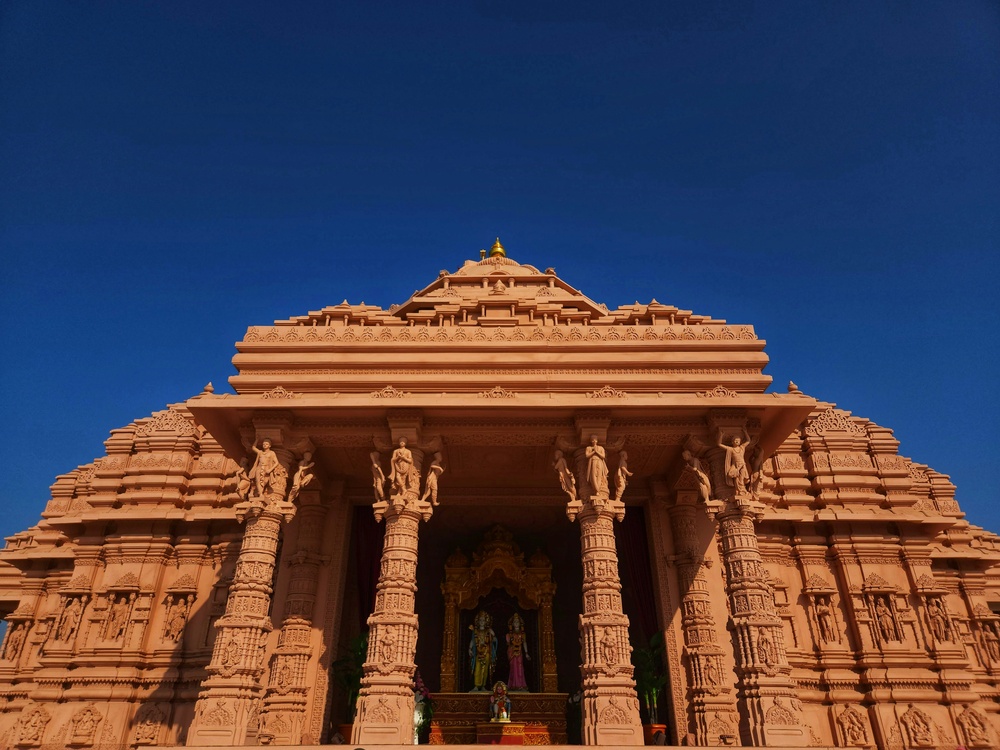Ayodhya, the ancient and sacred city located on the banks of the Sarayu River in Uttar Pradesh, is a destination that blends spirituality, mythology, and history in every corner. Revered as the birthplace of Lord Rama, Ayodhya attracts millions of pilgrims and travellers throughout the year. But beyond its religious significance, Ayodhya offers cultural richness, architectural beauty, and timeless stories that make it a must-visit for every traveller. Here is why these Ayodhya visiting places should be part of your travel bucket list.
1. Ram Janmabhoomi – The Heart of Devotion
Ram Janmabhoomi is the most important place in Ayodhya, believed to be the exact birthplace of Lord Rama. The grand Ram Temple under construction here symbolises centuries of faith, resilience, and devotion. Visiting this sacred site fills one with spiritual bliss and a sense of connection to India’s rich mythological history. Its architecture, rituals, and devotional energy make it a must-visit for spiritual seekers and cultural travellers alike.
2. Hanuman Garhi – For Protection and Blessings
Hanuman Garhi is a temple dedicated to Lord Hanuman, believed to be the protector of Ayodhya. Located atop a hillock with 76 steps, it offers panoramic views of the city. Devotees believe that visiting Hanuman Garhi before Ram Janmabhoomi ensures that their pilgrimage is complete. Its spiritual significance and breathtaking city views make it an unmissable stop among Ayodhya visiting places.
3. Kanak Bhawan – The Royal Gift to Sita
Kanak Bhawan is a stunning temple dedicated to Lord Rama and Goddess Sita. Legend says it was gifted to Sita by Kaikeyi after her marriage to Rama. The temple’s richly decorated idols adorned with gold crowns and jewellery captivate devotees. Its royal architecture, vibrant colours, and divine ambience make it a cultural and spiritual delight for every traveller.
4. Sita Ki Rasoi – A Glimpse into Mythological Domestic Life
Sita Ki Rasoi, located near Ram Janmabhoomi, is an ancient kitchen believed to have been used by Goddess Sita. It houses a symbolic kitchen setup with utensils, giving visitors a glimpse into the simplicity and grace of domestic life in Treta Yuga. For those interested in mythology and cultural traditions, this is a humble yet powerful site to visit.
5. Dasrath Bhavan – Reliving the Royal Legacy
Dasrath Bhavan, situated in Ramkot, is believed to be the original palace of King Dasrath, father of Lord Rama. The temple houses shrines of Rama, Sita, Lakshmana, and Bharat, and is filled with devotional chants and colourful decorations. Visiting Dasrath Bhavan allows travellers to immerse themselves in the royal stories of Ayodhya’s glorious past, making it an essential experience among Ayodhya visiting places.
6. Nageshwarnath Temple – Ancient Shiva Devotion
Nageshwarnath Temple is an ancient Shiva temple believed to have been established by Kush, son of Lord Rama. According to legend, he built it to honour a Nag-Kanya (serpent girl) who returned his lost armlet and was a devotee of Lord Shiva. The temple’s mythological significance and peaceful environment attract devotees and travellers interested in exploring India’s diverse spiritual heritage.
7. Guptar Ghat – Where Divinity Merged with Eternity
Guptar Ghat is a serene and sacred ghat along the Sarayu River where Lord Rama is believed to have taken Jal Samadhi to leave his earthly life and return to Vaikuntha. The ghat, with its beautifully built steps and temples, is ideal for holy dips, meditation, and witnessing peaceful sunsets. The evening aarti here creates an atmosphere of devotion and serenity, making it a must-visit for spiritual rejuvenation.
8. Mani Parvat – The Mythological Hillock
Mani Parvat is a small hillock with immense mythological importance. It is believed to be a part of the Sanjeevani mountain carried by Hanuman that fell here while he was flying back to revive Lakshmana. Today, it houses a Buddhist stupa, a Shiva temple, and a Hanuman shrine. The panoramic views of Ayodhya from Mani Parvat are spectacular, making it a peaceful spot for reflection and photography.
9. Tulsi Smarak Bhawan – Celebrating Literary Heritage
Tulsi Smarak Bhawan is dedicated to the great saint-poet Goswami Tulsidas, who composed Ramcharitmanas. It houses a museum, Ramayana research centre, and an auditorium where Ramleela and cultural performances are organised. For literature lovers, scholars, and cultural travellers, this is one of the most enriching Ayodhya visiting places to understand the poetic and devotional traditions of India.
10. Ram ki Paidi – The Ghats of Spiritual Grandeur
Ram ki Paidi is a series of well-constructed ghats along the Sarayu River where pilgrims take holy dips. The evening aarti here, with hundreds of lamps illuminating the river, is a mesmerising sight. During Deepotsav, lakhs of diyas are lit here, creating record-breaking displays and attracting global attention. The spiritual energy, combined with the natural beauty of the river, makes it a must-visit for every traveller.
Conclusion
Ayodhya is not just a pilgrimage destination; it is a journey into India’s living heritage, timeless mythology, and spiritual consciousness. These Ayodhya visiting places are must-visits for every traveller to experience devotion, history, cultural pride, and inner peace. Whether you seek blessings, wish to relive the legends of the Ramayana, or simply immerse yourself in spiritual tranquillity, Ayodhya will leave you with unforgettable memories and a deeply enriched soul.





